
Roots
The whisper of the scalp, often unheard beneath the vibrant coils and curls that grace so many heads, holds a world of activity. It is a hidden landscape, teeming with life, where the very oils we produce dance with a complex community of microorganisms. For those with textured hair, this relationship takes on a particular significance, shaped by practices that span generations and geographies.
Understanding the deep currents of this delicate balance begins with acknowledging the fundamental elements at play ❉ the very architecture of our hair, the natural secretions that sustain it, and the microscopic residents that call this unique environment home. It is a story of inherent design and environmental interaction, a quiet conversation happening just beneath the surface, one that deserves our thoughtful attention.
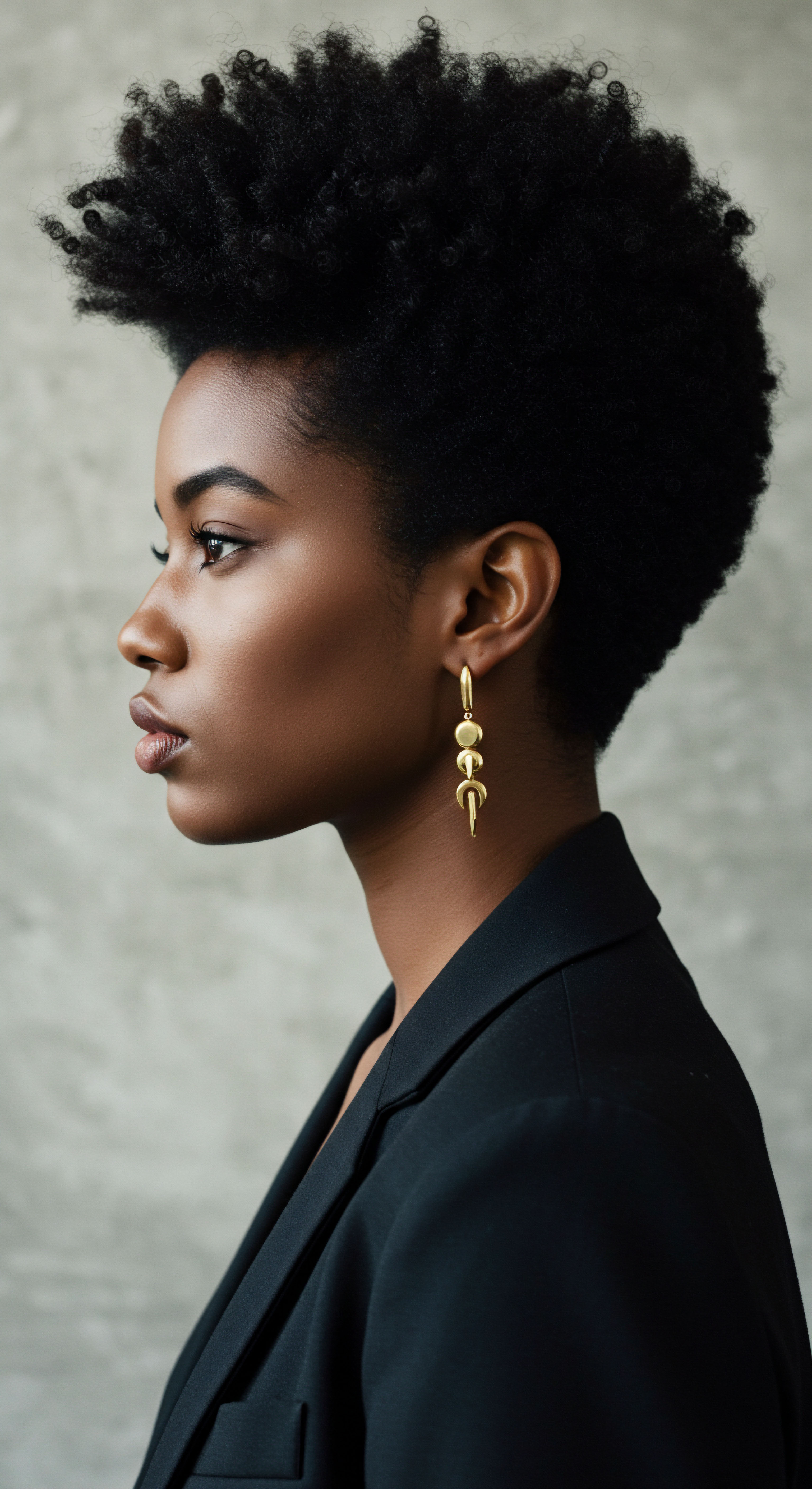
Scalp’s Hidden Ecosystem
The scalp, a specialized expanse of skin, provides a distinct habitat for a diverse collection of microorganisms, collectively known as the scalp microbiome. This ecosystem is a dynamic interplay of bacteria, fungi, and yeasts, all coexisting within a lipid-rich environment. Unlike other skin regions, the scalp is densely populated with hair follicles and sebaceous glands, creating a moist and lipid-laden setting that favors the proliferation of certain lipid-loving microbes. The deep follicular structure of the scalp also provides niche regions, allowing for a variety of microbial residents to flourish.
Key residents within this microscopic world include the fungus Malassezia, along with bacterial species like Cutibacterium Acnes and Staphylococcus Epidermidis. These microorganisms are typically commensals, meaning they coexist without causing harm. In fact, many play a protective role, contributing to the skin’s defense mechanisms and maintaining an acidic pH, which helps deter the growth of harmful pathogens. For example, Staphylococcus Epidermidis produces antimicrobial peptides that support skin defense and modulate inflammation, while Cutibacterium Acnes metabolizes lipids, helping to maintain scalp pH.
The scalp is a vibrant, microscopic world where natural oils and diverse microbes engage in a constant, delicate dance.

Sebum’s Vital Role
Natural scalp oils, known as sebum, are a complex mixture of lipids produced by the sebaceous glands nestled within the hair follicles. This oily substance is not merely a byproduct; it is a vital component of scalp health. Sebum lubricates the hair and skin, forming a protective barrier that helps prevent moisture loss and shields against external irritants. The composition of sebum includes triglycerides, fatty acids, squalene, and cholesterol, each playing a part in the overall health of the scalp and hair.
The fatty acids within sebum are particularly noteworthy. They contribute to the skin’s acidic pH, which is inhospitable to many common pathogens. Moreover, certain fatty acids exhibit antimicrobial properties, acting as natural defenders against undesirable microbial overgrowth. The interaction between sebum and the resident microbial community is profound.
Malassezia species, for instance, are lipophilic, meaning they thrive on lipids, utilizing sebum as a primary food source. This relationship is usually symbiotic, but an overabundance of sebum can create conditions conducive to the overgrowth of these yeasts, potentially leading to conditions like dandruff.
| Microbe Type Cutibacterium acnes (Bacteria) |
| Primary Function on Scalp Metabolizes lipids, maintains pH |
| Impact of Imbalance Reduced levels associated with dandruff; can be involved in hair loss |
| Microbe Type Staphylococcus epidermidis (Bacteria) |
| Primary Function on Scalp Produces antimicrobial peptides, modulates inflammation |
| Impact of Imbalance Increased levels associated with dandruff; can contribute to inflammation |
| Microbe Type Malassezia (Fungus/Yeast) |
| Primary Function on Scalp Thrives on sebum, part of normal flora |
| Impact of Imbalance Overgrowth linked to dandruff and seborrheic dermatitis |
| Microbe Type Understanding these microbial roles offers a clearer view of scalp health dynamics. |
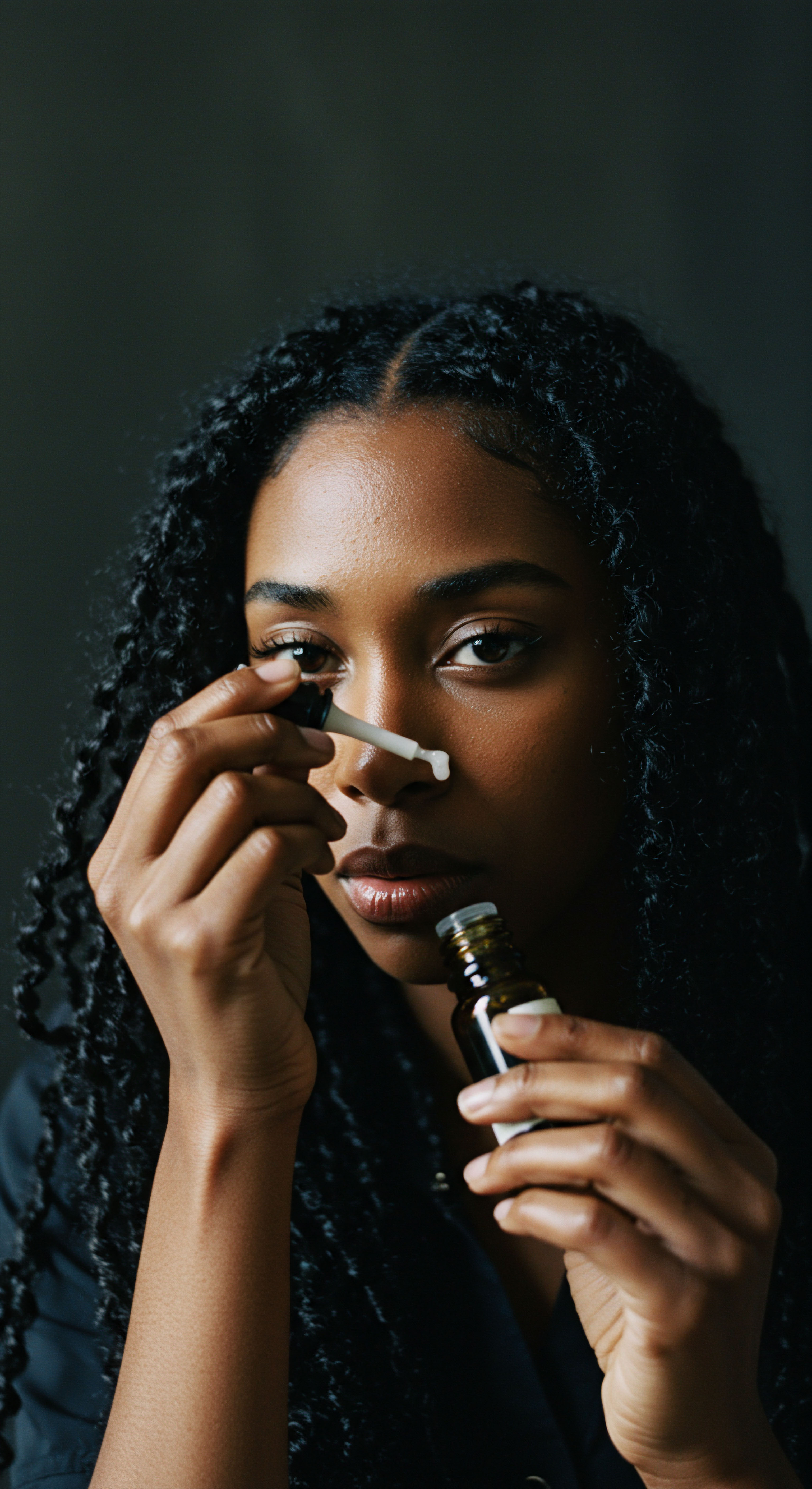
Hair Coverings and Environmental Shifts
The act of covering textured hair, whether with bonnets, scarves, wigs, or hats, introduces a layer of environmental modification to the scalp. This practice, deeply embedded in cultural traditions and daily routines, can subtly alter the microclimate directly surrounding the scalp. Occlusion, the act of covering the skin, can lead to changes in temperature, humidity, and pH levels. These shifts, while often temporary, can influence the activity and balance of the scalp microbiome.
A covered scalp might experience increased warmth and moisture, creating a more humid environment. This increased humidity, alongside potential changes in pH, can affect the growth patterns of resident microbes. For instance, an elevated pH under occlusion has been shown to favor the growth of certain bacterial species. Recognizing these environmental alterations is a foundational step in understanding how natural scalp oils and the microbial community respond when hair is kept covered.
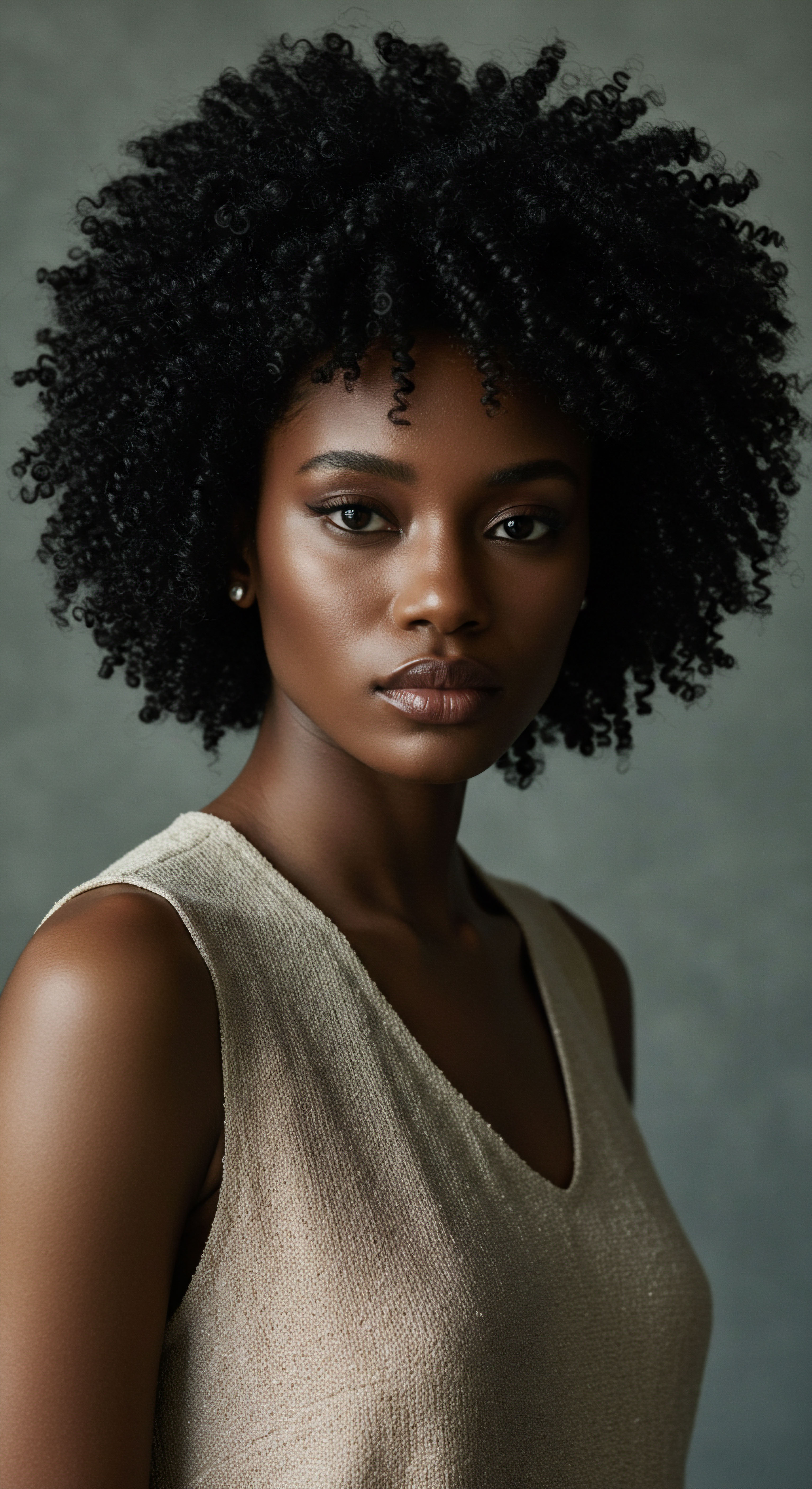
Ritual
The daily rhythm of caring for textured hair often includes the ritual of covering. From the silken embrace of a bonnet at night to the purposeful drape of a scarf for protection, these practices are more than mere habits; they are expressions of care, identity, and tradition. Yet, beneath these coverings, the scalp continues its quiet work, and the delicate interplay of natural oils and microscopic life responds to these routines.
To truly appreciate the wisdom in these rituals, and to refine them for optimal scalp wellness, we must delve into the subtle ways coverings reshape the scalp’s immediate environment, influencing how sebum behaves and how its microbial companions adapt. It is a journey into the practical wisdom of textured hair care, guided by a gentle curiosity about the unseen world beneath.

How Coverings Change the Scalp Environment
Hair coverings, whether for cultural observance, style, or protection, create a unique microclimate on the scalp. This microclimate differs significantly from an uncovered scalp, primarily in terms of temperature, humidity, and aeration. When hair is covered for extended periods, heat and moisture become trapped, leading to a rise in both scalp temperature and relative humidity. This altered environment can have a ripple effect on the scalp’s physiology and its microbial inhabitants.
The increased humidity can soften the stratum corneum, the outermost layer of the skin, and may lead to an increase in transepidermal water loss (TEWL) after the covering is removed, signaling a potential compromise in the skin barrier function. Furthermore, the reduced air circulation can lead to a less oxygenated environment, which can influence the balance between aerobic and anaerobic bacteria on the scalp. Certain anaerobic bacteria, like some strains of Cutibacterium Acnes, may find such conditions more favorable for their proliferation.
Hair coverings subtly reshape the scalp’s microclimate, influencing oil behavior and microbial life.

Sebum Redistribution and Accumulation
Natural scalp oils, or sebum, are continuously produced by the sebaceous glands. Under a hair covering, the normal distribution and flow of these oils can be altered. Instead of being exposed to open air, which allows for some evaporation and even distribution, sebum may accumulate more readily on the scalp surface and along the hair shaft beneath the covering. This accumulation can create a more concentrated lipid environment.
This concentration of lipids can serve as a more abundant food source for lipophilic microorganisms, such as the Malassezia species. While these yeasts are a normal part of the scalp flora, their overgrowth, often fueled by excess sebum, is directly associated with conditions like dandruff and seborrheic dermatitis. The fatty acid components of sebum, when metabolized by these yeasts, can also produce irritating byproducts, contributing to scalp discomfort and flaking.
- Temperature Increase ❉ Coverings can trap heat, elevating scalp temperature.
- Humidity Retention ❉ Moisture from sweat and evaporation remains close to the scalp.
- Reduced Airflow ❉ Limited oxygen exchange alters the balance of aerobic and anaerobic microbes.
- Sebum Pooling ❉ Oils may not spread or evaporate as freely, leading to localized accumulation.

Cultivating Balance in Covered Hair Care
Given these environmental shifts, the approach to caring for a scalp that is frequently covered requires mindful attention. The aim is not to eliminate coverings, which hold significant cultural and practical value, but to support the scalp’s natural equilibrium within this context. Regular, gentle cleansing becomes more important to manage sebum buildup and remove metabolic byproducts that could irritate the scalp or feed opportunistic microbes.
Choosing breathable covering materials, when appropriate, can assist in mitigating excessive heat and humidity. Materials like silk or satin, often favored for their gentle touch on hair strands, also offer a smoother surface that may reduce friction and minimize product absorption, allowing the scalp to breathe more freely than denser fabrics. Incorporating scalp massages can also help stimulate circulation and aid in the healthy distribution of natural oils, preventing localized pooling. These intentional practices support the scalp’s resilience, helping it maintain its microbial harmony even when nestled beneath a covering.
| Environmental Factor Temperature |
| Change Under Covering Increases |
| Potential Microbial Impact Favors growth of heat-tolerant microbes |
| Environmental Factor Humidity |
| Change Under Covering Increases |
| Potential Microbial Impact Supports proliferation of moisture-loving bacteria and fungi |
| Environmental Factor Aeration |
| Change Under Covering Decreases |
| Potential Microbial Impact Shifts balance towards anaerobic bacteria |
| Environmental Factor Sebum Distribution |
| Change Under Covering Accumulation |
| Potential Microbial Impact Provides more substrate for lipophilic microbes, potentially leading to overgrowth |
| Environmental Factor Understanding these changes helps tailor scalp care for covered hair. |
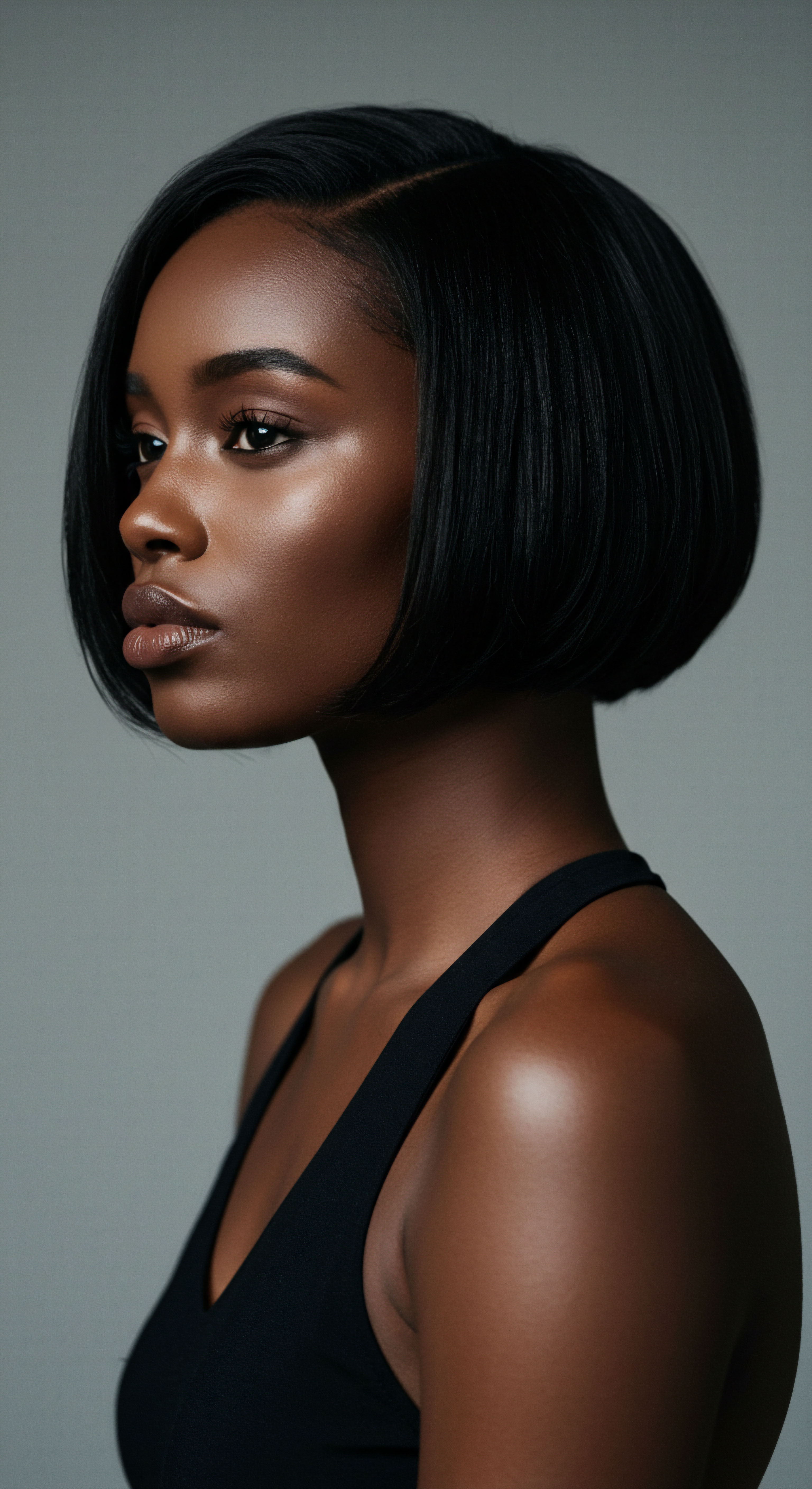
Relay
To truly comprehend the intricate dance between natural scalp oils and microbial balance beneath coverings, we must step beyond simple observations and delve into the deeper currents where biology meets cultural practice, and where the unseen world of microbes shapes our lived experience. The scalp, a vibrant biological canvas, responds to the subtle shifts imposed by various coverings, revealing a complex interplay that extends beyond mere hygiene. This section invites a deeper contemplation of how our biological makeup, the whispers of history, and the choices of daily life converge to influence the delicate microbial equilibrium that resides just below the surface of our hair. It is a space where scientific rigor meets the rich tapestry of human experience, offering a more complete view of scalp wellness.

What Specific Microbial Shifts Occur Beneath Coverings?
The altered microclimate beneath hair coverings can indeed precipitate specific shifts within the scalp’s microbial community. While the healthy scalp is home to a balanced consortium of microorganisms, prolonged occlusion can disrupt this equilibrium, favoring the proliferation of certain species over others. Research indicates that a reduction in bacterial diversity on the scalp is often associated with conditions like sensitive scalp and excess sebum.
A notable shift observed is the potential for an increase in lipophilic yeasts, particularly Malassezia species such as Malassezia Globosa and Malassezia Restricta. These yeasts thrive on the fatty acids present in sebum. When sebum accumulates under coverings, it provides an abundant food source, allowing these yeasts to multiply beyond their typical commensal levels. This overgrowth is a primary contributor to common scalp conditions like dandruff and seborrheic dermatitis, characterized by flaking, itching, and inflammation.
Conversely, some studies suggest that while Cutibacterium Acnes is generally a dominant bacterial species on a healthy scalp, its population may decrease relative to other bacteria in certain imbalanced conditions, including those associated with dandruff. At the same time, an increase in Staphylococcus Epidermidis has been linked to dandruff-affected scalps. This suggests a dynamic rebalancing of the microbial landscape, where the specific environmental conditions created by coverings can tip the scales.
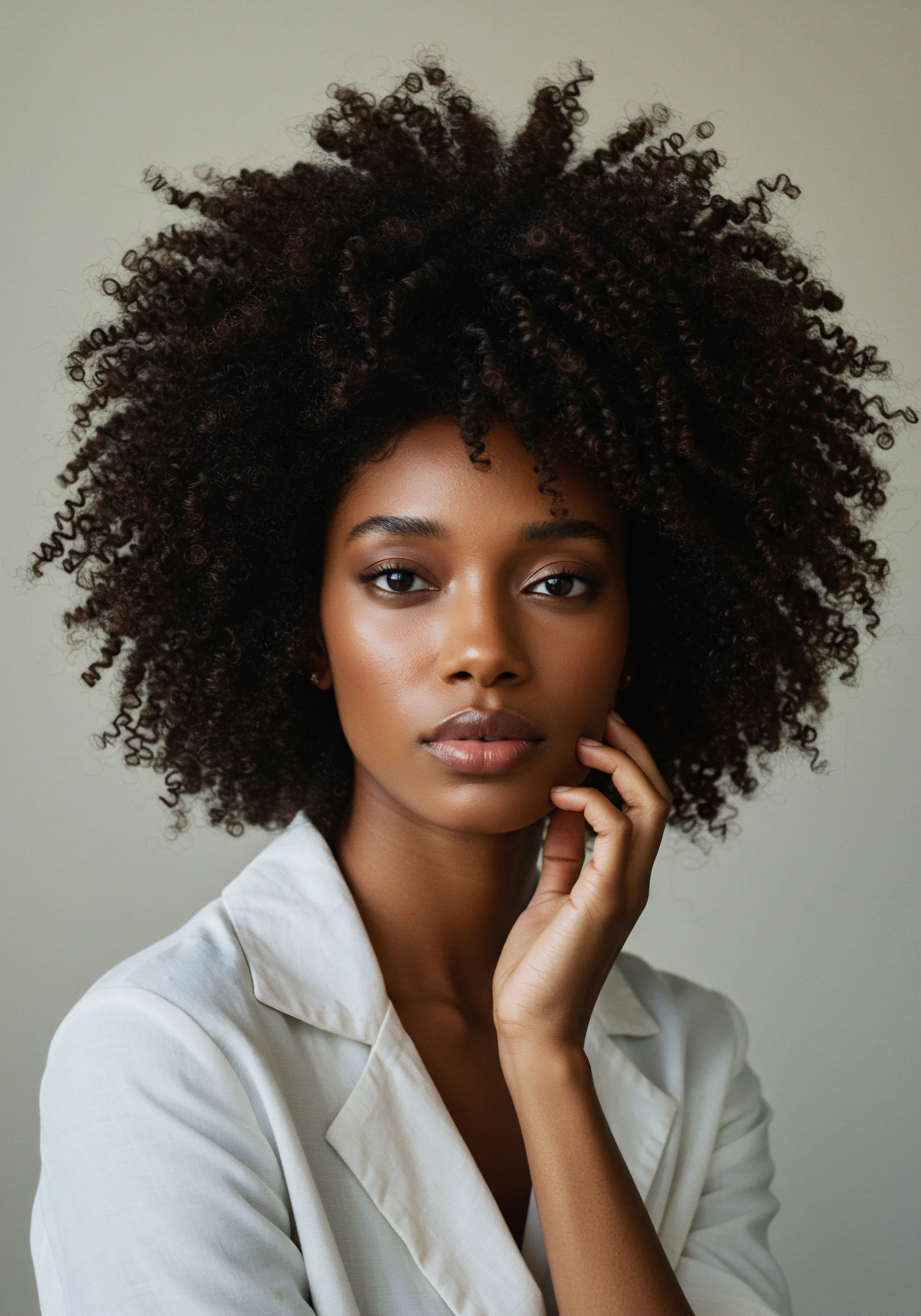
How Do Sebum’s Fatty Acids Influence Microbial Populations?
The specific composition of sebum, particularly its fatty acid profile, exerts a significant influence on the microbial populations residing on the scalp. Sebum contains a complex array of lipids, including triglycerides, wax esters, squalene, and cholesterol, which are metabolized by various microorganisms. The breakdown of triglycerides by microbial lipases releases free fatty acids onto the skin surface. These free fatty acids are not merely metabolic waste products; they play a direct role in shaping the microbial environment.
Some fatty acids contribute to the naturally acidic pH of the skin, which acts as a barrier against many pathogenic bacteria. However, the balance of these fatty acids is critical. For instance, the overgrowth of Malassezia species is linked to their ability to hydrolyze sebum triglycerides, producing pro-inflammatory oleic acid. This oleic acid can disrupt the skin barrier and trigger the abnormal peeling associated with dandruff.
Research highlights that alterations in the skin’s lipid composition can impair barrier function, leading to inflammatory reactions. A study on acne patients, for example, revealed changes in specific skin surface lipids and their relationship with skin barrier function. While not directly about coverings, this research underscores the sensitivity of the scalp’s lipid environment to external and internal factors, and how changes in sebum composition can directly influence microbial activity and scalp health. The interplay between sebum’s fatty acids and the microbial community is a finely tuned system, where disruption can lead to a cascade of effects.
Sebum’s fatty acids are not passive elements; they actively shape the scalp’s microbial terrain.
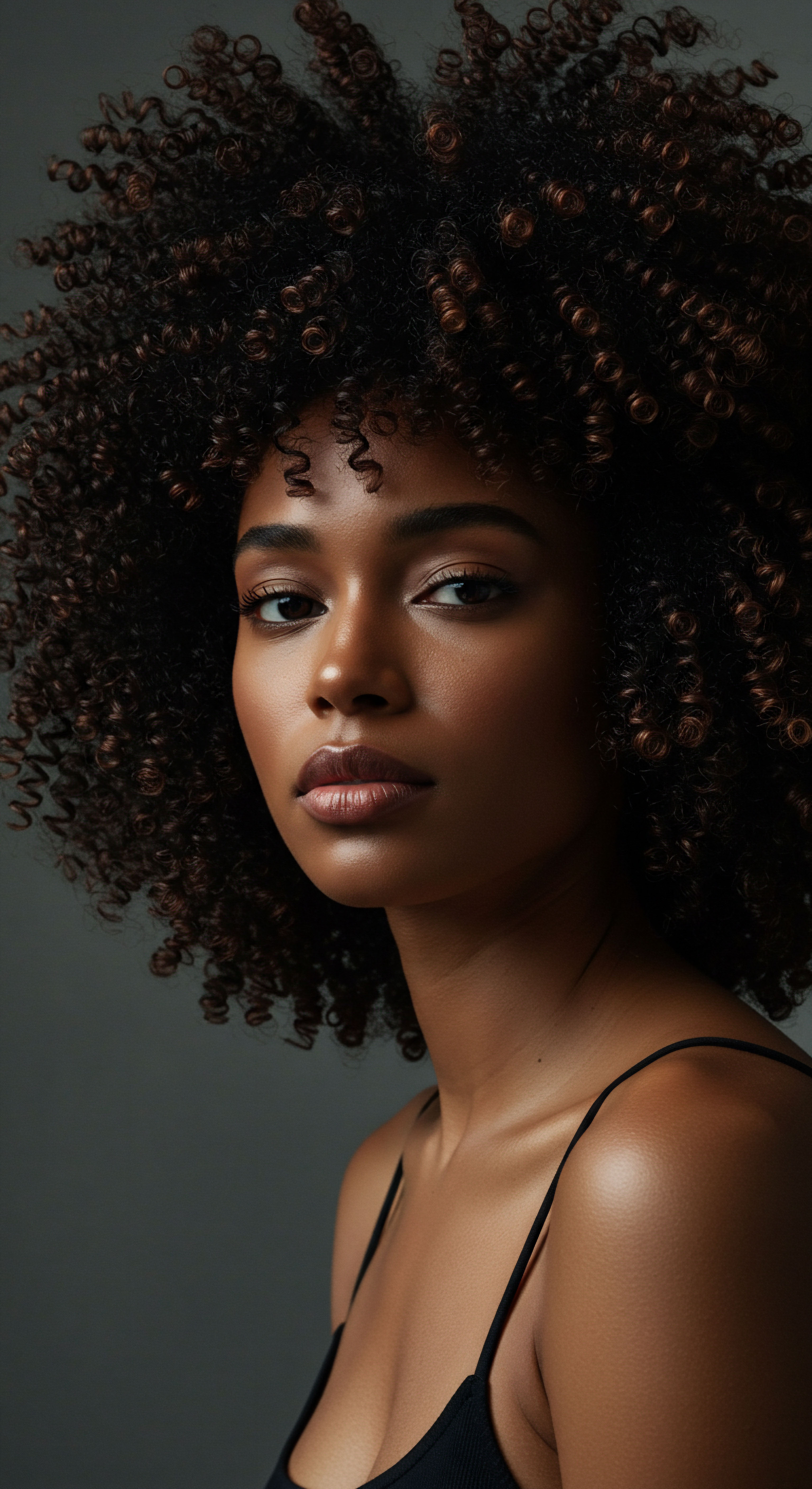
A Glimpse from Research ❉ The Impact of Occlusion on Skin Microflora
The concept of occlusion and its impact on skin microflora is not new in dermatological research. Early studies, though not always specific to the scalp or textured hair, have illuminated how a covered environment can alter the microbial landscape. For example, a study examining the effects of a 3-day occlusive dressing on the forearm observed significant changes in the resident flora. It found that relative skin moisture increased substantially under occlusion, and skin pH shifted from acidic to more alkaline.
These increased levels of moisture and pH were suggested to partially explain a higher risk of infection in occluded skin compared to non-occluded skin. While the scalp presents a distinct environment with its dense hair follicles and sebaceous glands, the fundamental principles of altered moisture and pH influencing microbial growth remain relevant. This general principle suggests that consistent covering of the scalp could similarly shift the microbial balance towards species that thrive in more humid and less acidic conditions, potentially exacerbating issues for those predisposed to certain scalp conditions.
| Microbe Malassezia spp. |
| Sebum Dependence High (lipophilic, feeds on fatty acids) |
| Role in Scalp Health Normal commensal; overgrowth causes dandruff, seborrheic dermatitis |
| Microbe Cutibacterium acnes |
| Sebum Dependence Moderate (metabolizes lipids) |
| Role in Scalp Health Maintains pH; dysbiosis linked to hair loss and other issues |
| Microbe Staphylococcus epidermidis |
| Sebum Dependence Low to Moderate (can produce ceramides) |
| Role in Scalp Health Protective; imbalance associated with dandruff |
| Microbe Sebum provides sustenance, but its composition and quantity dictate microbial harmony. |

Cultural Dimensions of Hair Coverings and Scalp Care
The practice of covering hair is deeply woven into the cultural fabric of many communities worldwide, particularly within Black and mixed-race hair traditions. These coverings are not merely fashion statements; they carry layers of meaning, from spiritual observance and social identity to practical protection against environmental elements and as a means of maintaining intricate hairstyles. The understanding of scalp care within these contexts often predates modern scientific inquiry, relying on generations of accumulated wisdom.
For centuries, communities have developed sophisticated hair care rituals that implicitly address the challenges posed by coverings. These practices often include regular cleansing, the application of various natural oils for moisture and scalp health, and the use of breathable materials. While historical records may not always articulate the scientific rationale in modern terms, the efficacy of these traditional approaches often aligns with contemporary dermatological understanding of microbial balance.
For instance, the use of certain plant-derived oils, like castor oil or black cumin seed oil, in traditional hair care for textured hair, has been found to possess antimicrobial properties that could contribute to maintaining scalp health. The continuity of these cultural practices speaks to an intuitive understanding of the scalp’s needs, adapting care to the realities of covered hair.
- Protective Function ❉ Shielding hair from environmental stressors and damage.
- Cultural Identity ❉ Expressing heritage, spirituality, or social affiliation.
- Style Preservation ❉ Maintaining intricate hairstyles for longer periods.
- Moisture Retention ❉ Helping to seal in moisture, particularly for drier hair types.
The relationship between scalp oils, the microbiome, and hair coverings is thus a multifaceted one, shaped by biology, environment, and culture. A comprehensive view recognizes that maintaining a healthy scalp beneath coverings involves not only scientific understanding of microbial dynamics but also respect for and integration of traditional care practices that have sustained hair wellness for generations. The goal is to support the scalp’s inherent ability to find its own balance, fostering an environment where both hair and its microscopic companions can flourish.

Reflection
The journey through the subtle interplay of natural scalp oils and the microbial world beneath hair coverings reveals a deeper appreciation for the inherent wisdom within our bodies and the enduring traditions of care. We have seen how the scalp, a vibrant ecosystem, adapts to the intimate environment created by coverings, and how our choices in care can either support or challenge its delicate balance. It becomes clear that scalp wellness for textured hair is not a singular pursuit but a continuous conversation, a gentle attentiveness to the signals our bodies send, harmonizing scientific understanding with ancestral practices. The beauty of healthy hair, in its myriad forms, is deeply rooted in this unseen world, inviting us to listen more closely to its whispers.

References
- Rinaldi F, Pinto D, Borsani E, et al. The first evidence of bacterial foci in the hair part and dermal papilla of scalp hair follicles ❉ a pilot comparative study in alopecia areata. International Journal of Molecular Sciences. 2022;23(19):11956.
- Saxena R, Mittal P, Clavaud C, et al. Comparison of healthy and dandruff scalp microbiome reveals the role of commensals in scalp health. Frontiers in Cellular and Infection Microbiology. 2018;8:346.
- Grimshaw SG, Smith AM, Arnold DS, et al. The diversity and abundance of fungi and bacteria on the healthy and dandruff affected human scalp. PLoS One. 2019;14(12):e0225796.
- Xu Z, Wang Z, Yuan C, Liu X, Yang F, Wang T, Wang J, Manabe K, Qin O, Wang X and Zhang Y. Dandruff is associated with the conjoined interactions between host and microorganisms. Scientific Reports. 2016;6:24877.
- Draelos ZD. Essentials of hair care often neglected ❉ hair cleansing. International Journal of Trichology. 2010;2(1):24-29.
- Lee Y, Kim N, Park J, et al. Relationship between the bacterial community structures on human hair and scalp. Journal of Dermatological Treatment. 2020;32(7):793-798.
- Oh, J. Kim, S.N. Kim, S.Y. et al. Utilizing Untargeted Lipidomics Technology to Elucidate Differences in Lipid Compositions Among Sensitive Dry, Sensitive Oily and Healthy Skin Types. MDPI. 2023.
- Clavaud C, Jourdain R, Bar-Hen A, et al. Dandruff is associated with disequilibrium in the proportion of the major bacterial and fungal populations. Scientific Reports. 2013;3:1041.
- Choi, S.M. Park, H. Kim, J.H. et al. The scalp microbiota in hair loss. Typology. 2023.
- Omer H, McDowell A, Alexeyev OA. Understanding the role of Propionibacterium acnes in acne vulgaris ❉ The critical importance of skin sampling methodologies. Clinical Dermatology. 2017;35:118-129.
- Akhtar N, Mahto R, Singh R. Hair Oils ❉ Indigenous Knowledge Revisited. International Journal of Trichology. 2011;3(2):101-106.
- Hashimoto, K. Effects and Uses of Occlusion on Human Skin ❉ An Overview. ResearchGate. 2005.
- Piérard-Franchimont C, Piérard GE. Seborrheic dermatitis and the microbiome. Ducray. 2019.
- Park, H. Kim, S.Y. Kang, B.H. et al. Staphylococcus epidermidis Cicaria, a novel strain derived from the human microbiome, and its efficacy as a treatment for hair loss. Molecules. 2022;27(16):5136.
- Grimshaw SG, Smith AM, Arnold DS, Xu E, Hoptroff M, Murphy B. The diversity and abundance of fungi and bacteria on the healthy and dandruff affected human scalp. PLoS One. 2019;14(12):e0225796.